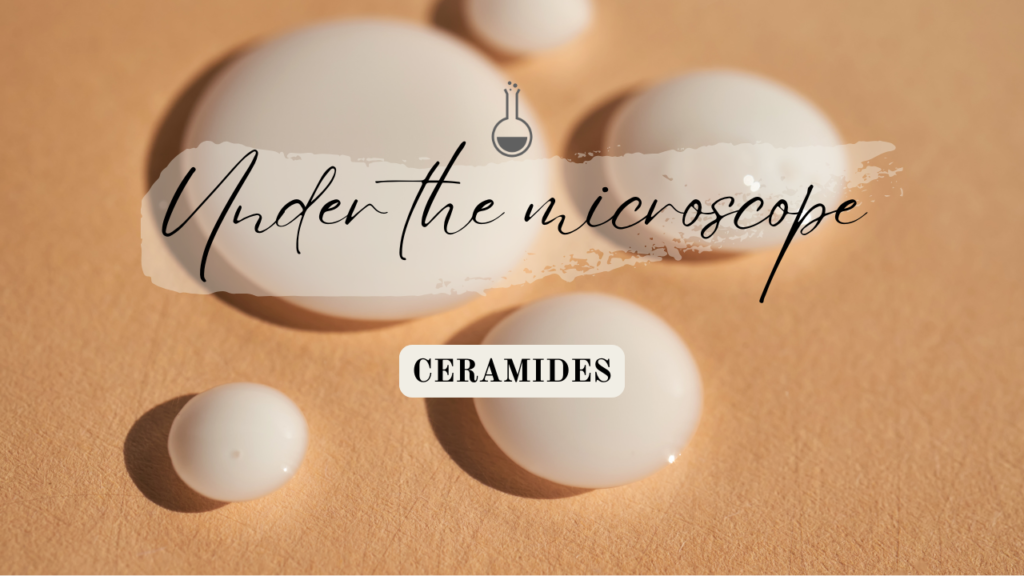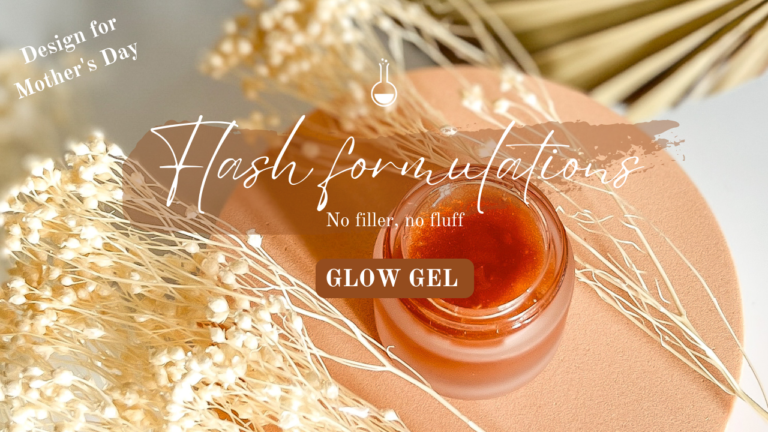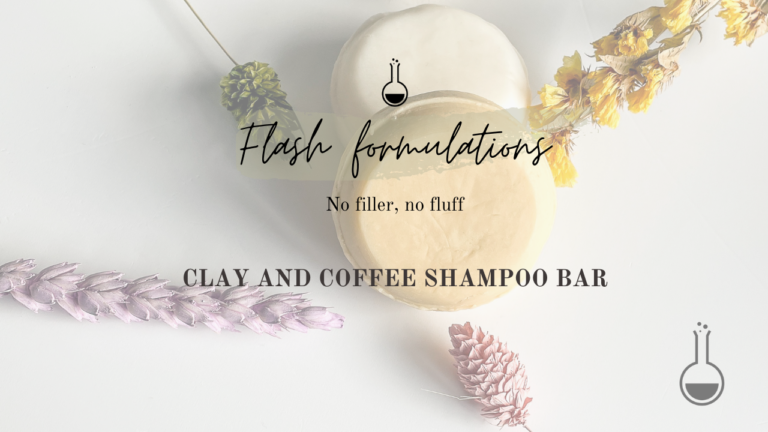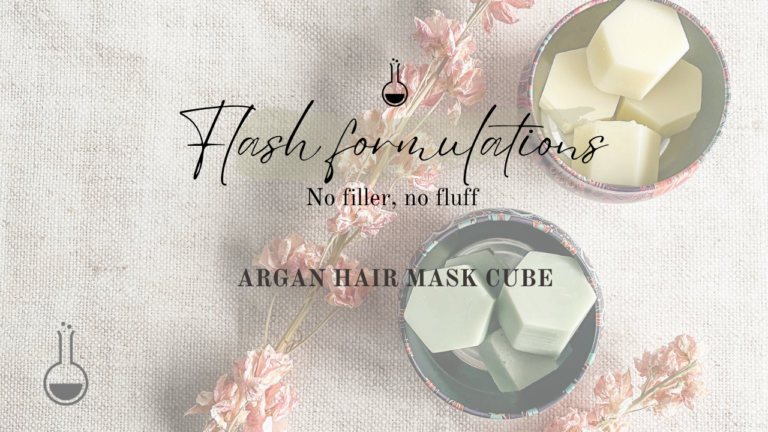EVERYTHING YOU NEED TO KNOW ABOUT CERAMIDES IN SKINCARE

Table of Contents
WHAT ARE CERAMIDES?
Ceramides are lipid molecules naturally found in the stratum corneum (the outermost layer of the skin), where they make up around 50% of the skin’s lipid barrier. Their primary function is to maintain moisture balance and protect the skin from external aggressors like pollution, bacteria, and irritants.
When ceramide levels decline—due to factors like aging, harsh skincare, weather changes, or over-cleansing—the skin barrier becomes compromised, leading to dryness, irritation, and increased sensitivity. This is why ceramide-rich skincare can be especially beneficial for dry, sensitive, or aging skin.
Ceramides are also studied for their role in compromised skin conditions, such as eczema and rosacea, where the skin barrier is weakened. While ceramide-based products can help support skin barrier function, they are not a medical treatment for these conditions.
WHY ARE CERAMIDES ESSENTIAL FOR A HEALTHY SKIN?
Ceramides are more than just another moisturising ingredient—they are the very foundation of a strong skin barrier. Here’s why they deserve a spot in your skincare formulations:
1. Strengthen the skin barrier
A compromised barrier leads to moisture loss, irritation, and sensitivity. Ceramides help reinforce the skin’s natural defences, making it more resilient against pollution, allergens, and harsh weather.
2. Prevent moisture loss
By reducing transepidermal water loss (TEWL), ceramides help keep hydration levels balanced, leaving skin plump and comfortable.
3. Support anti-ageing
As we age, ceramide production declines, contributing to fine lines, sagging, and a weakened barrier. Replenishing ceramides helps maintain firmness and elasticity.
4. Soothe & protect sensitive skin
If your skin is prone to redness, irritation, or eczema, ceramides act as a calming, protective shield against environmental stressors.
TYPES OF CERAMIDES USED IN SKINCARE
Not all ceramides are the same. Different types play specific roles in skin barrier repair and hydration. Here are the most common ones found in skincare:
| Ceramide Type | Function | Best for |
|---|---|---|
| Ceramide NP (3) | Retains moisture, strengthens the barrier | Dry, sensitive skin |
| Ceramide AP (6-II) | Supports hydration & skin renewal | Ageing, dehydrated skin |
| Ceramide EOP (1) | Structural reinforcement, protection | Damaged, eczema-prone skin |
| Ceramide NS (2) | Hydration & barrier repair | Sensitive, dry skin |
| Ceramide EOS (9) | Deep repair & protection | Very dry, inflamed skin |
Using a blend of different ceramides, rather than just one, offers the best skin benefits. They work even better when combined with cholesterol and fatty acids to mimic the skin’s natural lipid balance.
HOW TO FORMULATE WITH CERAMIDES
Formulating with ceramides requires careful consideration, as they can be unstable. They can re-crystallise or degrade if exposed to heat or light. It all depends on the form/ type you choose.
Here’s what you need to know:
1. Choose the right form
Ceramides come in different forms, including powder, thick liquid, and encapsulated versions. Encapsulated ceramides tend to be more stable in formulations. Please check the supplier’s description so you understand what you are buying.
2. Solubility & incorporation
- Ceramides are lipophilic and should be dispersed in oils, lipid phases, or emulsions.
- In emulsions, they should be incorporated into the oil phase before emulsification.
- If using a pre-dispersed ceramide (often in a glycol or phospholipid base), follow supplier recommendations for proper incorporation. You may find that they recommend adding these to the water phase.
3. Temperature sensitivity
- Most ceramides are heat-sensitive, so they should be added to formulations at 40°C or lower.
- BUT! If using a ceramide powder, disperse it in a compatible oil before adding it to your emulsion. This will also mean heating the oils to a very high temperature (80-90°C) before adding the ceramide powder.
4. pH considerations
- Ceramides are stable in a pH range of 4.5 to 6.5. As always, please check the supplier’s recommendation.
- Avoid highly acidic or alkaline environments, as extreme pH can degrade their structure.
5. Usage levels
- Typical usage rates range from 0.5% to 5% or as recommended by the supplier.
- Higher percentages might not necessarily increase efficacy, as ceramides work best in structured delivery systems.
6. Combine with barrier-boosting ingredients
For maximum effectiveness, pair ceramides with:
Cholesterol & Fatty Acids – Essential for optimal barrier function.
Hyaluronic Acid – Draws in hydration, complementing ceramides.
Niacinamide – Encourages skin to produce more ceramides naturally.
Panthenol (Pro-Vitamin B5) – Soothes and enhances skin repair.
Squalane – Adds lightweight hydration without greasiness.
SKINCARE FORMULATION IDEAS
Are you looking for ways to incorporate ceramides into your skincare formulations? Here are some ideas:
Hydrating Ceramide Serum
You can create a lightweight, fast-absorbing serum that strengthens the barrier while delivering deep hydration.
Key ingredients: Ceramide NP, hyaluronic acid, niacinamide Best for: Dehydrated, sensitive skin
Barrier Repair Moisturiser
Why not formulate a nourishing cream that restores damaged skin and locks in moisture?!
Key ingredients: Ceramide AP, cholesterol, squalane Best for: Dry, eczema-prone, and ageing skin
Soothing Ceramide Cleanser
How about a gentle, non-stripping cleanser that preserves the skin’s protective layer?
Key ingredients: Ceramide EOP, aloe vera, panthenol Best for: Sensitive and reactive skin types
Ceramides are one of those ingredients that quietly do all the hard work in the background—strengthening the barrier, keeping hydration levels in check, and ensuring your skin stays comfortable and resilient.
If you haven’t yet formulated with ceramides, now is the time to start. Play around with different types, see how they fit into your formulations, and let your skin (or your customers’ skin) reap the benefits.




2 responses
Hi Timi,
What do you think about Ceramides with less than 1%? The cerave, facial moisturizer PM, for example, advertises with ceramides but they all are after Phenoxyethanol in the IL so, with your expertise, do you think it is enough to even make a difference or just marketing? I hate when product marketing doesn’t tell what IL tells (as far as it can tell), so it matters to me!
My apologies for the late response. Your question got buried under the numerous spam posts. You’re right to notice that in CeraVe PM the ceramides come after phenoxyethanol, which means they’re all below 1%. At first glance that does look like “just for marketing.” But here’s the thing: ceramides don’t need to be used at huge percentages. Even at 0.1–0.5% they can support the skin barrier and hydration, if they’re delivered properly and paired with the right lipids.
That’s why CeraVe’s system makes a difference. They don’t just drop ceramides into the mix, but their multivesicular (MVE) emulsion tech helps the ceramides release slowly and integrate with cholesterol and fatty acids in the formula. That combination is what gives results.
So yes, it’s fair to say the marketing makes it sound bigger than it is. But no, it’s not completely smoke and mirrors. Even under 1% can matter when the whole formulation is built around barrier repair. In summary:
When <1% Ceramides can be effective:
-Supported by cholesterol + fatty acids = these help create the right “skin-identical” lipid mix.
-Presence of phytosphingosine (a ceramide precursor) = boosts the skin’s own ceramide synthesis.
-Encapsulation or delivery system (like CeraVe’s MVE or liposomes) = ensures slow release and better penetration.
-Moisturising base (humectants like glycerin, hyaluronic acid, or occlusives like dimethicone, petrolatum, or oils) = creates the environment ceramides need to work.
-Research-backed formulation = often the case with derm brands that publish studies (CeraVe, Eucerin, La Roche-Posay).